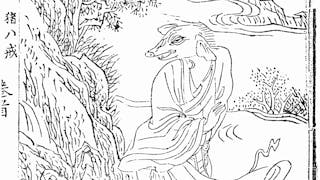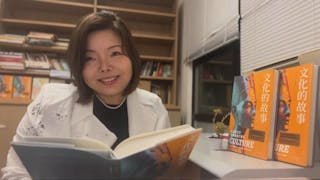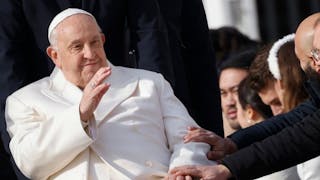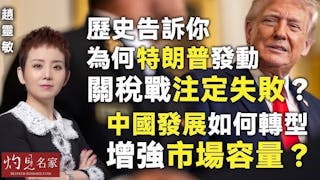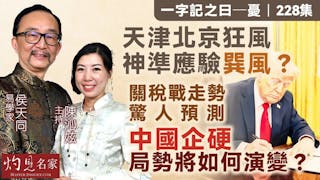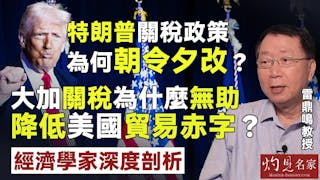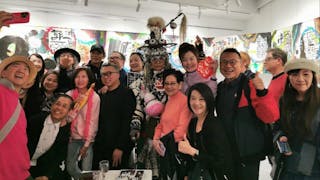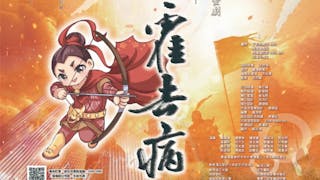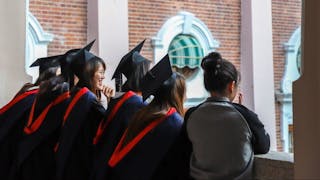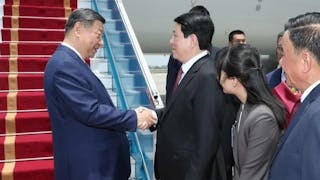從弗洛伊德精神分析法之普及到福柯建構之生物權力,由傳統草藥療法至現代生物醫學,疾病(disease)的含義在近200年來隨着現代西方醫學傳入中國,發生了巨大變化,創造了新的話語(discourse),嘗試用理論來說明疾病(illness),重新定義何謂健康,並重構階級和性別[1]。結果,醫學文獻改寫了,加入了衞生史、精神病理學,還有癌症、殘疾和大流行病研究等。
疾病的概念和隱喻
英語disease「疾」和illness「病」二字經常作為同義詞交替互用。自從加拿大社會學家亞瑟‧弗蘭克(Arthur W. Frank)解構二字,兩者便從體系上嚴格區分開來:「病」(illness)是社會經歷,「疾」(disease)是生理過程體驗[2]。事實上,俄裔美國醫學史學家奧維‧特金(Owsei Temkin)把「疾」(disease)重新界定為:包含從本體論到生理學自古以來的範圍[3]。
英國醫學史學家阿德里安‧威爾遜(Adrian Wilson)通過研究疾病概念的歷史加以區分,認為從自然主義──現實主義角度來定義疾病(disease)是罔顧歷史,而從歷史主義—概念主義的向度來說明疾病(disease)則純屬偶然[4]。美國中醫歷史學家瑪爾塔‧漢森(Marta Hanson)採用了後者,其「前提是把疾病(disease)置於歷史中考察,由社會定義,且具有文化意義」;她將「疾」(disease)的各種概念與個體「病」(illness)的敍事聯繫起來:「『疾』(disease)的各種概念,既構成了患者敍述的『病』(illness),復讓醫生能夠確定患者所述的內容中,哪部分涉及客觀[5]。」
威爾遜總結道,希望比較研究西方、中國或阿育吠陀醫學傳統[6]。然而,中國的疾病概念仍屬新興領域,需待進一步研究。中國醫學文獻史學家范行准(1906–98)在上世紀80年代就這方面發表了兩部前瞻著作[7]。於此,我只想追溯「疾病」(disease/illness)這個現代漢語複合詞中,兩個字符在甲骨文及鐘鼎文出現的情況。
文字學家羅振玉(1866–1940)分析了甲骨文的「疾」字,最初出現時由象形文字「矢」和「人」的圖像(屬「大」部,而非「疒」部)組合而成。



正如蘇珊‧桑塔格(Susan Sontag)所說,現代人表達疾病(disease)的方式之一就是使用隱喻[13]。譚光輝研究從清末到五四時期,現代中國文學把疾病(disease)化為隱喻,從而象徵社會文化徵狀和現代創傷。他觀察到這種「疾病情意結」(disease complex)在當代中國小說中受到意識形態或話語權力所抑壓,並被健康的主題取代[14]。在中國,以書寫疾病來抗衡「毛文體」的做法已經消失;直至最近,這種寫作在主流市場導向中,才以非主流的聲音重新出現。正如鄧寒梅的《中國現當代文學中的疾病敍事研究》所言,現代中國文學以隱喻的方式來處理疾病這個主題,很大程度上是由於要達至「和諧」及「健康」,因而屈從於當代的道德倫理考慮[15]。最後,鄧寒梅提出了從五種角度來研究疾病(illness)敍事,即文學、社會學、倫理學、宗教和比較文學,但疾病(disease)本身的敍述卻被忽略了[16]。

人文醫學與疾病敍事
人文醫學最早納入學術範疇始於西方,然後來到中國,北京大學醫學出版社於2007年創刊了《中國醫學人文評論》,而北京大學醫學人文研究院於一年後正式成立[17]。疾病(disease)話語跨越了民族、社會科學、文學和藝術的範疇,變得更多面向。相關書籍如梁其姿(Angela Ki Che Leung)的Leprosy in China: A History(《中國麻風病史》,2009)、她與夏洛特‧費夫(Charlotte Furth)合編的Health and Hygiene in Chinese East Asia: Policies and Publics in the Long Twentieth Century(《華人東亞地區的健康與衞生──20世紀長久以來的政策與民眾》,2010)、瑪塔‧漢森的Speaking of Epidemics in Chinese Medicine: Disease and the Geographic Imagination in Late Imperial China(《話說中醫裏的流行病──晚期帝制中國的疾病與地理想像》,2011)、鄧寒梅的《中國現當代文學中的疾病敍事研究》(2012)、安娜‧勞拉-溫賴特(Anna Lora-Wainwright)的田野考察著作Fighting for Breath: Living Morally and Dying of Cancer in a Chinese Village(《為呼吸而戰──在中國鄉村中生於道德死於癌症》,2013)、蘭達‧布朗(Miranda Brown)的The Art of Medicine in Early China: The Ancient and Medieval Origins of a Modern Archive(《早期中國醫術——現代檔案的古代及中世紀起源》,2015),以及安德魯‧斯科訥鮑姆(Andrew Schonebaum)的Novel Medicine: Healing, Literature, and Popular Knowledge in Early Modern China(《小說醫學──近代中國的療癒、文學及大眾知識》)等等都如雨後春筍般出現[18]。
疾病敍事屬於人文醫學的研究範疇。美國在這個新興研究領域中的兩位領軍人物是哈佛醫學院的精神病學家兼人類學家亞瑟‧克萊曼(Arthur Kleinman)和哥倫比亞大學敍事醫學課程創辦人兼總監的醫生作家里塔‧夏隆(Rita Charon)。克萊曼藉由文學來查究意義系統,開創了疾病的敍事方式,從而「加強了[患者的]陳述,加深了臨牀醫生理解痛苦經歷」[19]。
夏隆遵循克萊曼的腳步,借鑒了文本細讀、讀者反應批評(reader-response criticism)和接受理論(reception theory),開拓了醫療保健的視野。在夏隆的敍事醫學中,「講述和聆聽自我的故事……本身是由疾病引起的」[20]。 她認為「身體眾聲喧嘩」(heteroglossic),醫生不僅需要學習徵狀的語言,還需要學習「愉悅的語言、迷失的語言、生活的語言,並進而理解這些話語也會談到患者的健康情況」[21]。 實際上,疾病敍事既描述徵狀,也為治療開出處方。中國仍有許多疾病被視為禁忌,故而急需疾病敍事。然而,正正是這些禁忌產生了各種話語,特別是文學形式的話語。
疾病的敍事過程,並把身體看待成文本,都揭示了疾病的政治。如果身體與思維皆屬身份的基本組成部分,那麼通過談論相關社會歷史背景中患者的身體和心理狀況,疾病話語便可以探究主體身心方面的政治。從語言上講,「話語」(discourse)與「疾病」(disease)之間的關係體現在「診」字,而「診」是歸入「言」部的。事實上,中醫的望聞問切四種診斷方法正對應着:看/讀、聽/嗅、詢問和觸摸,其中大多關係到語言。診斷疾病只能在討論和定義的話語中形成[22]。疾病絕對值得討論;疾病渴求,甚至期待屬於本身的論述話語。由於疾病關乎身體狀況,而根據黃金麟對於身體的社會歷史研究,「身體的存在無可避免地與許多存在的力量混合在一起」,諸如政治、經濟、社會和文化[23]。疾病話語不僅是醫學話語,而且總與帝國主義、民族主義、市場經濟、革命浪漫主義、社會心理危機、社會動亂、同性戀/性愛或政治議程等相互指涉。
Introduction: Disease and Discourse
From Freud’s popularization of psychoanalysis to Foucault’s formulation of bio-power, from traditional herbal treatments to modern scientific biomedi- cine, the meanings of disease have undergone such drastic changes with the introduction of modern Western medicine into China during the last two hun- dred years that new discourses have been invented to theorize illness, rede- fine health, and reconstruct classes and genders.1 As a consequence, medical literature is rewritten with histories of hygiene, studies of psychopathology, and stories of cancer, disabilities and pandemics, etc. This edited volume is de- veloped from an interdisciplinary panel bearing the same title at the 2011 joint conference of the Association for Asian Studies and International Convention of Asia Scholars in Honolulu.2 Including studies of discourses about both bodily and psychiatric illness in modern China, it attempts to bring together ground- breaking scholarships that reconfigure the fields of film, literature, history, psychology, anthropology, ethnography, gender and cultural studies by tracing the pathological path of the “Sick Man of East Asia” (Dong Ya bingfu 东亚病夫) through the nineteenth and twentieth centuries into the new millennium.
Disease Concepts and Illness Metaphors
Throughout this volume, the terms “disease” and “illness” are often used inter- changeably as synonyms since their strict institutional distinction has been deconstructed by Canadian sociologist Arthur W. Frank in the sense that ill- ness as a social experience is an experience in and of disease as a physiologi- cal process.3 In fact, Russian-American medical historian Owsei Temkin has redefined “disease” as a spectrum from the ontological to the physiological since antiquity.4 Researching on the history of disease concepts, British medi- cal historian Adrian Wilson further distinguishes the naturalist-realist per- spective of disease as ahistorical from the historicalist-conceptualist approach to disease as contingent.5 Adopting the latter approach on “the premise that diseases are historically situated, socially defined, and culturally meaningful,” American historian of Chinese medicine Marta Hanson relates disease con- cepts to individual illness narratives: “Disease concepts both structured pa- tients’ narratives of illness and led physicians to decide what part of what they said was objectively pertinent.”6
As Wilson concludes his article with an aspiration for a comparative study of the Western and Chinese or Ayurvedic medical traditions,7 the Chinese con- ception of disease remains an emerging field for further investigation beyond the scope of this volume. Where historian of Chinese medical literature Fan Xingzhun 范行准 (1906–98) has published two pioneering works in this re- gard in the 1980s,8 here I just want to trace the modern compound word for “disease/illness,” jibing 疾病, to each character’s oracle-bone and bronze in- scriptions in antiquity. Philologist Luo Zhenyu 罗振玉 (1866–1940) analyzed the oracle-bone inscription of ji, which first appeared as a combination of the pictograph shi 矢 “arrow” and a drawing of “human” (大, instead of the “sick- ness” radical 疒), that it means “swift (like shooting)” and, by extension, “suf- fering (from being shot).”9 Luo’s in-law Wang Guowei 王国维 (1877–1927), also an epigrapher, explained the “illness” as a result of being shot in the context of ancient wartimes, but his most inspiring speculation is that ji may have origi- nated from the graph yi 医 “doctor”, which contains the same semantic ele- ment, shi.10
In respect to the oracle-bone inscription of bing, paleographer Zhu Fangpu 朱芳圃 (1895–1973) deciphered the graph, which consists of the archaic form of the “sickness” radical, i.e., pan 爿 or pian 片 “board/bed”, and a “person” with some drops of blood around his/her body, as a haunted person lying in the sickbed.11 Etymologist Xu Zhongshu 徐中舒 (1898–1991) identified the same graph simply as the later “sickness” radical 疒 and interpreted the dots on the sick person as sweat.12 While Wang’s relation of ji to yi implied a military need in the beginning of Chinese medical care, Zhu’s reading of bing is reminiscent of its shamanistic practice.13
As Susan Sontag has demonstrated, one of the modern ways to frame diseases is by use of metaphors.14 The metaphorization of disease as socio-cultural symptom and symbol of traumatic modernity emerged in modern Chinese literature from the late Qing to May Fourth periods according to Tan Guanghui 谭光辉, who observes that this “disease complex” has been suppressed by a cer- tain ideology or discursive power and substituted with a healthy theme in con- temporary Chinese fiction.15 The writing of disease as a counter-discourse to the dominant Mao discourse had disappeared in the People’s Republic of China (prc) and only reemerged recently as a marginal voice against the mainstream of marketization. In effect, as indicated in Deng Hanmei’s 邓寒梅 A Study of Illness Narratives in Modern and Contemporary Chinese Literature (Zhongguo xiandangdai wenxue zhong de jibing xushi yanjiu 中国现当代文学中的疾病叙事研究), the metaphorical approach to disease in modern Chinese literature has largely yielded to ethical concerns in the contemporary era for the sakes of harmony (hexie 和谐) and health (jiankang 健康).16 In the end, Deng proposes five perspectives to study illness narratives, namely, literature, sociology, ethics, religion, and comparative literature, but disease per se is ignored.17
Medical Humanities and Illness Narratives
Medical humanities recently appeared as an academic field first in the West then in China, where a journal entitled Chinese Medical Humanities Review (Zhongguo yixue renwen pinglun 中国医学人文评论) has been published by Peking University Medical Press (Beijing daxue yixue chubanshe 北京大学医学出版社) since 2007, and the Peking University Institute for Medical Hu- manities (Beijing daxue yixue renwen yanjiuyuan 北京大学医学人文研究院) was established a year later.18 Crossing the borders of nations, social sciences, literature and arts, discourses of disease have become more diversified. Books such as Angela Ki Che Leung’s 梁其姿 Leprosy in China: A History (2009), her and Charlotte Furth’s edited volume Health and Hygiene in Chinese East Asia: Policies and Publics in the Long Twentieth Century (2010), Marta Hanson’s Speak- ing of Epidemics in Chinese Medicine: Disease and the Geographic Imagination in Late Imperial China (2011), Deng Hanmei’s A Study of Illness Narratives in Modern and Contemporary Chinese Literature (2012), Anna Lora-Wainwright’s specific fieldwork Fighting for Breath: Living Morally and Dying of Cancer in a Chinese Village (2013), Miranda Brown’s The Art of Medicine in Early China: The Ancient and Medieval Origins of a Modern Archive (2015), and Andrew Schone- baum’s forthcoming Fictional Medicine: Diseases, Doctors and the Curative Properties of Chinese Fiction are mushrooming.19
Among the various approaches to medical humanities is illness narratives. Two key figures from this emerging area of study in America are psychiatrist- anthropologist Arthur Kleinman of the Harvard Medical School and literary physician Rita Charon, founder and director of the Program in Narrative Medi- cine at Columbia University. Kleinman pioneers illness narratives through a literary inquiry towards the system of meanings that “thickens the [patient’s] account and deepens the clinician’s understanding of the experience of suffering.”20 Following Kleinman’s steps, Charon borrows the literary methods of close reading, reader-response criticism and reception theory to broaden the vision of health care. In Charon’s narrative medicine, “the telling and lis- tening to stories of self…are themselves enabled by illness.”21 She suggests that “the body is heteroglossic,” and doctors need to learn not only the language of symptom but also “the language of pleasure, the language of loss, the language of life, and [therefore] come to understand that these discourses, too, speak of health.”22 Indeed, illness narratives aim at both descriptions of symptoms and prescriptions of treatments, which are badly needed by a nation such as China where many diseases remain taboos. Yet, it is precisely these taboos that gener- ate a variety of discourses, particularly in the form of literature.
The narrativization of illness and textualization of the body reveal the poli- tics of disease. If the mind and the body are the basic constituents of identity, discourses of disease probe into the psychosomatic politics of subjectivity by speaking about the sick person’s mental and physical conditions in the socio- historical context. Linguistically, the relation between “discourse” and “disease” is embodied in the Chinese character for “diagnose,” zhen 诊, which is catego- rized under the yan 言 “speech” radical. As a matter of fact, the four diagnostic methods (si zhen 四诊) in traditional Chinese medicine—observation, auscul- tation/olfaction, interrogation, pulse feeling and palpation (wang wen wen qie 望闻问切)—corresponding to looking/reading, listening/smelling, asking, and touching, are mostly related to language. Diagnosis on a disease can only be formed in the discourse of discussion and definition.23 Diseases are definitely discursive; disease desires, indeed demands, discourse. Since disease is a con- dition in body and, according to Hwang Jinlin’s 黄金麟 socio-historical study of body, “the existence of body is inevitably intermingled with the presence of many forces,” such as those of politics, economics, society, and culture,24 dis- courses of disease are not merely medical discourses, but also always already inter-discursive with imperialism, nationalism, marketization, revolutionary romanticism, socio-psychological crisis, social disorders, homo/sexuality, or political agenda as showcased in the nine chapters here.
Different Disciplines and Multiple Methodologies
Authors of this volume are from different disciplines and make multiple methodological contributions toward a common interest in the discourses of disease. The collection is organized chronologically and according to medi- cal categories. It begins with the nineteenth-century medical missionary Dr. James Henderson’s public health manual written for Britons in Shanghai. His influence on the early Chinese conception of hygiene is comparable to that of Russian writer Maxim Gorky on an array of Chinese intellectuals from the Republican period (1912–49) through the end of the Cultural Revolution (1966–76), including Lu Xun 鲁迅, Guo Moruo 郭沫若, Ding Ling 丁玲 and others, whose painful search for revolutionary happiness has eventually led to the pathologization of “unhappiness.” Against this historical background, how- ever, Guo Lusheng 郭路生 (nom de plume Shizhi 食指) and Wen Jie 温洁, two poets from the 1970s and 1980s respectively, strive to poeticize their personal experience of mental illnesses.
With the rapid economic growth and the concomitant environmental pollu- tion since the 1990s, Chinese people have become more concerned about their own physical wellbeing than ever. Female authors Xi Xi 西西 and Bi Shumin 毕淑敏 from Hong Kong and mainland China respectively have told their sto- ries of being a cancer patient and a psychologist. Yet the real threat across the new millennium has changed from cancer to aids—just like cancer replaced tuberculosis in the last century—as both diseases are covered in Yan Lianke’s 阎连科 fiction, which has inspired films, feature and documentary, about the moralized “plague” (even though it is actually spread by the “blood economy” rather than the sex industry) in the current decade. As Gu Changwei 顾长卫and Zhao Liang 赵亮 expose the body politics of aids in their films, the fear of hiv infection is further transmitted through the internet to social networks. The volume thus covers major public health problems, including mental illness, drug addiction, cancer, disabilities, and aids. The first part concerns hygiene and psychiatric disorder in both daily life and poetic form. Stephanie Villalta Puig’s opening chapter, “James Henderson’s Shanghai Hygiene and the British Constitution in Early Modern China,” analyzes the function that hygiene had for British imperial medicine in early modern China as a discourse to prevent and caution against disease. After an outline of the origins and de- velopment of Western hygienic medicine from its expression as a private con- cern to a public matter, Villalta Puig reviews Henderson’s Shanghai Hygiene as a unique work that reconciles classical and modern theories of British hygienic medicine in nineteenth-century China. Henderson issued numerous cautions to the British community in Shanghai and the rest of China in order to prevent the many diseases common to life in locations far away from the metropolis. In doing so, he mixed humoralist and public health principles with the racial, class, and moral prejudices prevalent in that period. The chapter ends with a study of selected reports from British doctors in the employment of the Impe- rial Maritime Customs Service in China between 1861 and 1884. These records reveal that the theory of hygienic medicine that informed Shanghai Hygiene was consistent with its practice by British doctors in China. The consistency between theory and practice showcases the importance of Shanghai Hygiene as an exemplar of a Chinese caution to the British constitution or, in other words, a British medical reaction to the prospect of the discourse of disease in late nineteenth-century China.
Entering into the modern times, when Chinese revolutionary culture reached its zenith in the 1950s and 1960s, Wendy Larson observes in her “Curing Unhappiness in Revolutionary China: Optimism under Socialism and Capitalism” that revolutionary optimism became a strongly encouraged emo- tional perspective, attitude, and expression. It was touted through literature, film, images, and virtually every aspect of daily life. Unhappiness, especially if publicly expressed, signaled personal and social dysfunction, which could be considered as mental illness in need of a cure. In literature, Maxim Gorky pro- vided the theory that produced socialist realism and the positive hero who, un- der the influence of Maoist revolutionary romanticism, became the represen- tative and purveyor of revolutionary optimism. As in the Soviet Union, where attempts to understand and manipulate the human mind through hypnosis, suggestion, and psychoanalysis had a long history, in revolutionary China a range of techniques and strategies were developed to encourage happiness and to cure—or penalize—unhappiness. However, the valorizing of happiness took place with equal fervency in the United States, where Émile Coué brought his theory of optimistic autosuggestion, inspiring influential figures such as Dale Carnegie, Norman Vincent Peale, and Robert H. Shuller. Larson argues that China and America can represent the extremes of socialist and capitalist societies, and both had similar, if not identical, strategic reasons for promoting and constructing happiness as the most acceptable public emotion. Emerging from the Enlightenment, socialism and capitalism embodied the modern ide- als of progress and improvement characteristic of scientific rationalism, which drove their embrace of happiness as the most effective, efficient emotional state and pathologized unhappiness as a disease that must be cured.
After the fanaticism of revolution, Birgit Bunzel Linder investigates the postrevolutionary reception of poetry about mental illness in her “Metaphors unto Themselves: Mental Illness Poetics and Narratives in Contemporary Chi- nese Poetry.” Linder’s two cases are Shizhi (Guo Lusheng), diagnosed with schizophrenia since 1972, and Wen Jie, chronically depressed since childhood, both of whom have written poetry that courageously represents their suffer- ings. The chapter examines the relationship between mental illness and poetic composition in the two poets who have become metaphors of the struggle for identity and agency. Their poems, always markers of already achieved (tempo- ral) wellness, reflect the complexity and vulnerability of trying to transcendent their illnesses. As such, they represent two notable contributions to the field of cross-cultural medical humanities and “illness poetics” from China.
Without the Cartesian split of the subject, the volume shifts its focus from the mind to the body in the second part on drugs and cancer as well as disabilities and aids. Gong Haomin 龚浩敏 examines the literary creation of drug addic- tion in his “Unmaking of Nationalism: Drug Addiction and Its Literary Imagi- nation in Bi Shumin’s Novel.” Taking Bi’s novel Red Prescription (Hong chufang 红处方) as a case study, he argues that nationalism, which used to be a central concern of the discourse of drug addiction in Chinese modernity, has become increasingly ineffective in charting this national “disease” in contemporary narratives. Postsocialist conditions, under which drug addiction is reimagined from a national crisis to a personal sickness, have rendered this discourse decidedly more heteroglossic than nationalistic. Also covering the Chinese writer-doctor Bi Shumin, Howard Y.F. Choy’s 蔡元丰 “Narrative as Therapy: Stories of Breast Cancer by Bi Shumin and Xi Xi” focuses on the fictional writings about breast cancer by two contemporary Chinese women writers, namely, Bi’s Save the Breast (Zhengjiu rufang 拯救乳房) and Xi Xi’s Elegy for a Breast (Aidao rufang 哀悼乳房), to explore the therapeutic function of storytelling at the subjective level. In light of Australian family therapist Michael White’s decon- struction practices of narrative therapy, Choy suggests that these masto-texts have emerged as investigative reports to rewrite fe/male fears of the malignant tumor that is not only incurable but also unspeakable because of its perceived relation to sexual characteristics. Though composed in different styles, both works examine the doctor-patient and author-reader power/knowledge rela- tionships by seeking therapy in narrative and reinventing narrative as therapy.
Extending from cancer to other illnesses, Shelley W. Chan’s 陈颖 “Narrating Cancer, Disabilities, and aids: Yan Lianke’s Trilogy of Disease” studies three novels by Yan Lianke: Streams of Light and Time (Riguang liunian 日光流年), Pleasure (Shouhuo 受活), and Dreamof Ding Village (Dingzhuangmeng 丁庄梦). Chan discusses how the novelist sees humans’ hopeless struggle with fate as well as with absurd phenomena, including lust, greed, and corruption, in the grotesque present-day China through writing about different kinds of sickness. The trilogy shows how, according to the stern satirist, the nightmare of being the “Sick Man of East Asia” is still haunting the nation even after its rapid economic developments.
The discourse of aids spreads from literature to film and the internet in the last part of this volume. Centering on an adaptation of Yan’s Dream of Ding Village, Qian Kun 钱坤 observes in her “Reluctant Transcendence: aids and the Catastrophic Condition in Gu Changwei’s Film Love for Life” that the fea- ture film follows Yan’s vision of aids as a metaphor for a vision of the cata- strophic condition of a market society, but also paradoxically aestheticizes this situation by proposing love as a way of transcendence. The negotiation with social obligation, commercial concern, and political censorship results in a film that reluctantly projects a transcendent vision of love and hope, which points to the future in a phantasmagorical, magical manner.
Following Chan’s study of Yan Lianke’s fiction and Qian’s chapter on Gu Changwei’s film, Li Li’s 李力 “Alone Together: Contagion, Stigmatization and Utopia as Therapy in Zhao Liang’s aids Documentary Together” critically ex- amines emerging Chinese independent director Zhao Liang’s aids documen- tary Together (Zai yiqi 在一起), which was initially conceived as a companion piece for Love for Life. In addition to covering the individual agonies of the “straight” patients who become infected primarily from blood transfusions in some of China’s poverty-ridden inland countryside, Zhao’s stylistic documen- tary also brings to light, with the help of digital media technology, dreadful stories of “non-straight” hiv/aids patients, who are believed in popular imag- ination to be deviants and whose stories inspire fears and bizarre fantasies. Through showing how and why hiv/aids is not merely a medical problem, but also a social issue which reveals a collective socio-psychological crisis in present-day China, Together shows us that the biggest threats the aids epi- demic has imposed on the society are secretive silence and public denial.
The proliferating discourse of aids continues with Kevin Carrico’s “The Un- known Virus: The Social Logic of Bio-conspiracy Theories in Contemporary China,” which is based upon a year of ethnographic research on a hypochondria or factitious illness known as “hiv-negative aids” (yinxingaizibing 阴性艾滋病) or “the unknown virus” (weizhi bingdu 未知病毒). In this epidemic, thousands of urban young people, following guilt-inducing visits to sex workers or ambiva- lent one-night stands, have come to the conclusion that they are infected with a gradually debilitating and fatal aids-like disease that nevertheless produces negative results on repeated hiv tests. Gathering online to exchange stories and symptoms, they eventually drew the attention of the media and the state, par- ticularly the Ministry of Public Health that oversaw a clinical study of this illness in early 2011 and dismissively concluded that it was “simply aids-phobia.” Ac- knowledging the fundamentally phobic and imaginary nature of this illness, yet contesting its resulting casual dismissal by the government, Carrico’s interview- based research examines patients’ illness narratives to trace the social and per- sonal truths expressed through this highly contagious disease of discourse.
Disease Discourses and Discursive Diseases
Together, these collected critical essays examine the ways in which our knowl- edge about disease (be it sickness preventions, mental illness, drug addiction, cancers, disabilities, or aids) is produced through discourse. From medical practices of public health to symptomatic strategies of linguistic interroga- tion, both scientific language and literary metaphors are problematized in the contexts of cultural maladies, social disorders, political pangs, and economic epidemics. Meanwhile, these discourses of disease also reveal the “diseases” of discourse, that is, the problematics of illness writing. For instance, Villalta Puig’s review of nineteenth-century British discourse of hygiene in China echoes the pseudo-science and Daoist art of yangsheng 养生, or “caring for life,” so widely disseminated through table talks and social media and prac- ticed by most, if not all, Chinese today that it has become paranoia in the face of the national crises of environmental pollution and food safety.25 After all, in a country without democracy, people are powerless to change their unlivable living environment; all they can do is to keep in good health, which constitutes their immediate conditions and ultimate defense, because we live with/in our bodies; hence, health and happiness replaces liberation.26
Yet even the emotion of unhappiness, as Wendy Larson notices, was easily pathologized as unhealthy and penalized as abnormal during Mao’s revolu- tion. And if genre matters, further research of mental illness should turn to po- etic discourses, as conducted by Birgit Bunzel Linder in this collection. While poets make use of poetic formalism to mirror social disorders, they also reveal the paradox that mental illness poetics per se manifests the very madness of civilization—just as disease discourses disclose discursive diseases.
Meanwhile, the allegorical and metaphorical discourses of disease in earlier literary studies and scholarship continue to be challenged as several chapters have showcased that the valance of nationalism is no longer adequate to ap- praise the theme of illness so familiar with Lu Xun’s work in the construction of a modern Chinese nation; instead, individual subject formation and collective social-psychological crisis are attempted to address the topic of disease. With his Madman of the May Fourth New Culture Movement (mid 1910s–20s), Lu Xun is known for changing his career from a medical doctor to a psychosomatic writer, who concerned not only the problems of China but also the conditions in humans, including his own. For Lu Xun, the language of disease is no more figurative than literal. The tendency of diagnosing Lu Xun’s moral burden as a mere “obsession with China” has overlooked other equally important facets of the discourses of disease in modern Chinese literature.27 Literary scholar Gao Xudong 高旭东 reminds us that before becoming a doctor Lu Xun was a patient, who suffered from odontopathy, gastrectasis, enteroparesis, pleu- risy, bronchial asthma, and tuberculosis throughout his life.28 While Lu Xun did imbue his work with medical knowledge, his identity and experience as a patient have been ignored in the studies of him and, as a result, he was idol- ized.29 The complexity of Lu Xun can only be seen when the dual character- istics of his spirit and madness, genius and sickness, as well as strength and weakness are read.
With regard to this, the nationalistic discourse of drug addiction, as shown in Gong Haomin’s chapter, has been losing its relevance in the postsocialist context of China, while Howard Choy questions the interpretation of illness as national allegory and probes the therapeutic function of personal narra- tive. At the same time, Shelley Chan’s reading of Yan Lianke’s fiction express- es what Hwang Jinlin values as “the ultimate solicitude for humans and the human body that is lacking” in recent sociological study of the body, that is, “humanistic and moral solicitude” in the age of market economy.30 On the con- trary, as Qian Kun points out, Yan’s metaphorical critique of marketization is problematically compromised and “transcended” into a love story in its filmic adaptation, and yet Li Li suggests in her analysis of the documentary version of aids narratives that the epidemic cannot be coped with unless it is detached from its socially constructed metaphors of circulation, mutation, and conta- gion. Nor can the symptomatology of hiv be dealt with, for those who are test- ed negative in Kevin Carrico’s survey, by reducing it to sheer phobia as reported by the government.
The dominant discourse by which the state defines diseases aims only at homogenizing the society by maintaining a healthy unity on a daily basis in order to meet a political agenda. In the end, in a nation obsessed with healthi- ness, these discourses of disease disturb the officially proclaimed social(ist) harmony with their mental and bodily heterogeneities. These are the discur- sive diseases that are seen as a threat against social stability in the eyes of the government and must be cured by controlling the individual(istic) sick voices.
本文為作者所編論文集《疾病的話語》(Discourses of Disease: Writing Illness, the Mind and Body in Modern China, 2016)導論部分,原作為英語,譯文有刪改,獲荷蘭出版社Brill授權翻譯,中譯獲香港文學評論學會授權出版,原載《真論》第二期[2021]:頁22-25。
註:
- 亞歷山大‧皮爾森醫生(Dr. Alexander Pearson, 1780–1874)於1805年將天花疫苗引入澳門和廣州,成為近代西方醫學傳入中國的里程碑。詳參扈國泰(Louis Fu), “The Protestant Medical Missions to China: The Introduction of Western Medicine with Vaccination”(〈新教到中國的醫療任務——引入西方醫學的疫苗接種〉),Journal of Medical Biography(《醫學傳記期刊》),21.2 (2013年5月),頁112–17。
- Arthur W. Frank, The Wounded Storyteller: Body, Illness, and Ethics(《受傷的說故事──身體、疾病和倫理》)(Chicago: University of Chicago Press, 1995), 187n. 早前,弗蘭克為查爾斯‧羅森伯格(Charles E. Rosenberg)和珍妮‧戈登(Janet Golden)合編Framing Disease: Studies in Cultural History(《建構疾病——文化史研究》)(New Brunswick, N.J.: Rutgers University Press, 1992)撰寫的導論 “Framing Disease: Illness, Society, and History”(〈建構疾病——病痛、社會與歷史〉),xxiii,以「生物事件相對於社會協商而來的結構」(biological event versus socially negotiated construction),把「疾」與「病」區分開來。然而,加拿大醫學史學家傑克琳‧杜芬(Jacalyn Duffin)撰寫的Lovers and Livers: Disease Concepts in History(《情人與肝——歷史上的疾病概念》)(Toronto: University of Toronto Press, 2005), 5–14,區分開「病」作為個體患者的主觀痛苦,認為客觀的「疾」把「病」轉化為概念,即認識論主導的概念。實際上,「疾/病」的二分法是如此隨意,以至阿德里安‧威爾遜(Adrian Wilson)在其 “On the History of Disease-concepts: The Case of Pleurisy”(〈論疾病概念的歷史——以胸膜炎為例〉), History of Science 38 (2000): 311n69,恰如其分地概括出:「這兩個詞的用法都很靈活,可以根據作者的修辭目的以多種不同的方式來表達,或者可以完全避免使用。」
- 範圍涵蓋了對疾病的本質作出最概括的、形而上的理解,及至對患者極為個別情況的背景描述。 參見奧西‧特金(Owsei Temkin), “The Scientific Approach to Disease: Specific Entity and Individual Sickness”(〈疾病的科學方法——特定實體和個人疾病〉), The Double Face of Janus and Other Essays in the History of Medicine (Baltimore: Johns Hopkins University Press, 1977), 441–55。按上註杜芬《情人與肝》中的解釋是:本體論從患者體外(例如神、細菌)來看待病痛的成因,而生理學理論則將其歸因於體內(譬如基因、各類內在失衡)。
- Wilson, “On the History of Disease-concepts,” 276.
- Marta E. Hanson, Speaking of Epidemics in Chinese Medicine: Disease and the Geographic Imagination in Late Imperial China (《話說中醫裏的流行病——晚期帝制中國的疾病與地理想像》)(New York: Routledge, 2011), 8–9.
- Wilson, “On the History of Disease-concepts,” 306.
- 范行准:《中國醫學史略》(北京:中醫古籍出版社,1986);及其《中國病史新義》(北京:中醫古籍出版社,1989)。
- 羅振玉:《殷虛書契考釋》(台北:藝文印書館,1975),2.75a。高本漢(Bernhard Karlgren)的Grammata Serica Recensa(《漢文典》,1957; Göteborg: Elanders Boktryckeri Aktiebolag, 1972, no. 494)則列出 “sickness” (疾病)、“pain”(痛苦)和 “sufferance”(病痛)作為「疾」的主要意義。徐中舒編的《甲骨文字典》(成都:四川辭書出版社,1989),838–39亦同意「疾」是「病」的本義。
- 王國維:〈毛公鼎銘考釋〉,收入《王國維遺書》,16卷(長沙:商務印書館,1940;上海:上海古籍出版社,1983),6:3a、8a。高本漢的《漢文典》,nos. 494和958,重構了「疾」和「醫」的上古音,兩個象形文字的發音分別為dz‘iə̯t 和 iə̯g,兩者的共同元音顯示出兩者之間的語音關係。
- 朱芳圃:《殷周文字釋叢》(北京:中華書局,1962),119–20。
- 徐中舒:《甲骨文字典》,837–38。
- 有關中國巫醫,可參攷范行准:《中國醫學史略》,5–7、12–13。
- Susan Sontag, Illness as Metaphor and AIDS and Its Metaphors(《疾病作為隱喻與愛滋病及其隱喻》)(New York: Anchor Books, 1990).
- 譚光輝:《症狀的症狀:疾病隱喻與中國現代小說》(北京:中國社會科學出版社,2007),7、183、280–81。
- 鄧寒梅:《中國現當代文學中的疾病敍事研究》(南昌:江西人民出版社,2012),第2、3章。
- 同上,311–12。
- 參看該研究院中英文版網站:http://imh. bjmu.edu.cn/ybjj/ybjjz/index.htm;http://english.bjmu.edu.cn/friendshiplink/school/68915.htm。
- 斯科訥鮑姆在書中通過明清小說探討帝制晚期的醫學、健康和疾病,還發表了關於民國小說中結核病的文章“Vectors of Contagion and Tuberculosis in Modern Chinese Literature”(〈現代中國傳染病和結核病的傳播媒介〉), Modern Chinese Literature and Culture 23.1 (2011): 17–46。
- Arthur Kleinman, The Illness Narratives: Suffering, Healing, and the Human Condition(《疾病敍事——痛苦、療癒與人類境況》)(New York: Harper Collins, 1988), 233.
- Peter L. Rudnytsky、Rita Charon合編:Psychoanalysis and Narrative Medicine(《精神分析與敍事醫學》)(Albany: State University of New York Press, 2008), 287。
- Rita Charon, “Where Does Narrative Medicine Come From? Drives, Diseases, Attention, and the Body”(〈敍事醫學從何而來?動力、疾病、注意力和身體〉),同上,24。
- 羅森伯格在其〈建構疾病〉,頁xix,中指出:「從患者的角度來看,診斷之事永遠不是靜止的。這些事總是暗示着未來的後果,並經常會考慮到過去發生的事情。這些事構成了持續敍事中的結構元素,即個體健康或生病,康復或死亡的特定軌跡」(From the patient’s perspective, diagnostic events are never static. They always imply consequences for the future and often reflect upon the past. They constitute a structuring element in an ongoing narrative, an individual’s particular trajectory of health or sickness, recovery or death)。
- 黃金麟:《歷史、身體、國家:近代中國的身體形成(1895–1937)》(2001;北京:新星出版社,2006),6。




